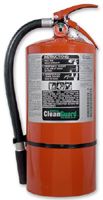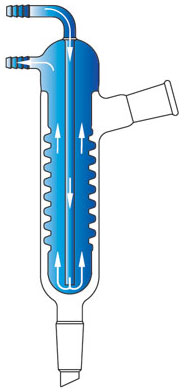| The Home page of ILPI's Safety Data Sheet (SDS) Resource, the leader in SDS information since 1995! | |
| The history and philosophy behind this resource. | |
| A curated collection of books and reference materials concerning Safety Data Sheets and closely related topics. | |
| Paste your plain text SDS into the SDS-Demystifier, and it will be converted into a hypertext-enriched document with links to detailed explanations of each key term. | |
| An extensive list of frequently asked questions about Safety Data Sheets including regulations, content, compliance, and more. | |
| A humorous take on Safety Data Sheet jargon. Fill in the blanks on our entry form to generate a personalized Unsafety Data Sheet to share with your coworkers. | |
| Since 1995, we've maintained this massive curated list of the best places to find Safety Data Sheets on the Internet. | |
| You are here! Way more than a glossary, this hypertext-enhanced resource covers hundreds of SDS-related terms and expert knowledge. Each entry includes both the SDS relevance and links to additional authoritative resources. | |
| Archived results of Safety Data Sheet related polls taken by some of our millions of site visitors | |
| The OSHA regulations behind SDS regulations, including the inspection guidelines and over 400 official interpretations letters under the Hazard Communication Standard | |
| Commercial suppliers of SDS authoring and management software as well as cloud compliance services. | |
| Commercial companies that will create SDS's for your specific needs as well as SDS translation companies. |

Safety signs, banners, and scoreboards? Get yours at Safety Emporium!
Definition

Protect sensitive electronic and laboratory equipment with Ansul CleanGuard extinguishers from Safety Emporium.
Target organ effects indicate which bodily organs are most likely to be affected by exposure to a substance. Casarett and Doull's Toxicology, the Basic Science of Poisons states that most chemicals that produce systemic toxicity do not cause a similar degree of toxicity in all organs but usually produce the major toxicity to one or two organs. These are referred to as target organs of toxicity for that chemical.
29 CFR 1910.1200, the OSHA Hazard Communication Standard (HCS), defines two broad classes of target organ toxicity. The following two classes include all significant health effects that can impair function, both reversible and irreversible, immediate and/or delayed and not specifically addressed in sections A.1 to A.7 and A.10 of Appendix A of the HCS:
- Specific target organ toxicity - single exposure, (STOT-SE) means specific, non-lethal target organ toxicity arising from a single exposure to a chemical. This is an example of an acute effect. Section 8 of Appendix A is devoted entirely to STOT-SE.
- Specific target organ toxicity - repeat exposure (STOT-RE) means specific target organ toxicity arising from repeated exposure to a substance or mixture. This is an example of an chronic effect. Section 9 of Appendix A is devoted entirely to STOT-RE.
STOT without a suffix is a general shorthand for either or both STOT-SE and/or STOT-RE
Additional Info
An organ is a collection of tissues joined in a structural unit to serve a common function in the body. Examples include your heart, lungs, brain, kidneys, liver, skin and many more. Because different types of organs are composed of different types of tissue, each with its own unique physical properties, structure, and function, chemicals often affect different organs in different ways. For example, alcohol is processed by your liver, and repeated exposure (through chronic alcoholism) will damage the liver more than other bodily organs. And asbestos (a solid and insoluble material) which usually enters the body through inhalation can cause severe damage to the lungs, however it does no direct damage to organs it can not reach such as the brain.
Some specific examples of target organ effects, their signs/symptoms, and chemicals that can cause them are:
| System and Effects | Signs and Symptoms | Examples of such chemicals |
| Cardiovascular - produce damage to the heart and blood vessels | cardiomyopathy, increase blood pressure, decreased exercise performance | Carbon monoxide, antimony compounds |
| Cutaneous hazards - affect the dermal layer (skin) of the body | Defatting of the skin, rashes, irritation | Ketones, chlorinated compounds |
| Endocrine - affect glands such as the thyroid and production of hormones | Lowered fertility, fetotoxic effects, immune system disruption | PCB's and dioxin, bisphenol A, DDT, diethylstilbestrol (synthetic estrogen) |
| Gastrointestinal - mouth, esophagus, stomach, intestines, rectum and more | Nausea, vomiting, diarrhea | Heavy metals |
| Hemato-poietic agents - act on the blood or hemato-poietic system, decrease hemoglobin function, deprive the body tissues of oxygen | Cyanosis, loss of consciousness | Carbon monoxide, cyanides |
| Hepatotoxins - produce hepatic (liver) damage | Jaundice, liver enlargement | Carbon tetrachloride, nitrosamines |
| Musculoskeletal - affect the muscles and skeleton | Mottling of teeth, osteoporosis (brittle bones), arthritis | Fluorides, alkaline earths, lead |
| Nephrotoxins - produce renal (kidney) damage | Edema, proteinuria | Halogenated hydrocarbons, uranium |
| Neurotoxins - produce their primary toxic effects on the nervous system | Narcosis, behavioral changes, decrease in motor functions | Mercury, carbon disulfide |
| Ocular (eye) hazards - affect the eye or visual capacity | Conjunctivitis, corneal damage | organic solvents, acids, osmium tetroxide |
| Reproductive toxins - affect reproductive (child-producing) capabilities including chromosomal damage (mutations) and effects on fetuses (teratogenesis) | Birth defects, sterility | Lead, DBCP |
| Respiratory - Agents which irritate or damage pulmonary (lung) tissue | Cough, tightness in chest, shortness of breath | Silica, asbestos |
Substances with a STOT-SE (single exposure) are classified into three categories in Figure A.8.1 of Appendix A of the HCS:
Category 1 substances have produced significant toxicity in humans, or, on the basis of evidence from studies in experimental animals, can be presumed to have the potential to produce significant toxicity in humans following single exposure.
Category 2 substances, on the basis of evidence from studies in experimental animals, can be presumed to have the potential to be harmful to human health following single exposure.
Category 3 substances produce transient (short duration or temporary) target organ effects such as narcotic effects or respiratory tract irritation.
Substances with a STOT-RE (repeated exposure) are classified into two categories in Figure A.9.1 of Appendix A of the HCS:
Category 1 substances have produced significant toxicity in humans, or, on the basis of evidence from studies in experimental animals, can be presumed to have the potential to produce significant toxicity in humans following repeated or prolonged exposure.
Category 2 substances, on the basis of evidence from studies in experimental animals, can be presumed to have the potential to be harmful to human health following repeated or prolonged exposure.
While SDS's and OSHA refer specifically to organs that can be damaged by a substance, the medical community also refers to organs targeted by diseases or other conditions. For example, the medical literature discusses target organ damage to the brain, heart and kidneys in the context of hypertension (high blood pressure). These target organ effects can manifest themselves even before hypertension is diagnosed or progresses from the pre-hypertensive state. Other diseases/conditions target other organs, of course.
Books Available
NOTE: We may collect a share of sales or other compensation from the links in the following list:
- "Casarett & Doull's Toxicology: The Basic Science of Poisons, Ninth Edition", Hardcover, 1,648 pages, 2018. Estimated price $131.13. Info and/or order.
- "Lu's Basic Toxicology: Fundamentals, Target Organs, and Risk Assessment, Seventh Edition", Hardcover, 663 pages, 2017. Estimated price $83.58. Info and/or order.
- "Goldfrank's Toxicologic Emergencies, Eleventh Edition", Hardcover, 2,096 pages, 2019. Estimated price $210.99. Info and/or order.
- "Managing Hazardous Materials Incidents Volume III: Medical Management Guidelines for Acute Chemical Exposures", Paperback, 110 pages, 2012. Estimated price $12.99. Info and/or order.
- "Pick Your Poison: How Our Mad Dash to Chemical Utopia is Making Lab Rats of Us All", Hardcover, 256 pages, 2011. Estimated price $21.57. Info and/or order.
SDS Relevance
Safety Data Sheets are required to report known target organ effects/toxicities (if any) in Section 2 of the SDS, symptoms/effects of exposure in Section 4, and any toxicological information in Section 11. It is important to recognize that under the classification system used by the HCS and GHS, Category 1 designates the greatest hazard and Categories 2, 3, and 4 indicate decreasing levels of hazard.
When working with chemicals that have target organ effects/toxicities it is critical to prevent exposure. This is especially true if you have a pre-existing condition, disease or injury to that particular organ. Read the SDS to determine the most effective personal protective equipment (PPE) for dealing with the chemical and be certain to minimize use and release of the chemical in the first place.
Further Reading
- Effects of Toxic Substances on Organ Systems and their Development at ATSDR lists chemicals in each category of organ toxicity that are of concern. Great resource!
- GHS 6, Part 3, Health Hazards discusses STOT-SE at Chapter 3.8 and STOT-RE at Chapter 3.9 in considerably more detail than the HCS's Appendix A.
- An OSHA interpretation letter titled OSHA's Amended Hazard Communication Standard (HCS 2012) about classification criteria for Single Target Organ Toxicity.
- An obsolete OSHA interpretation letter titled Definitions of target organ and hazards of chemicals under the Hazard Communication Standard.
- Another obsolete interpretation letter titled The HCS's requirement for target organ effects on labels for shipped containers of hazardous chemicals.
- One more obsolete letter, Clarification of the terms "appropriate hazard warning" and "mandatory".
- The effects of treatment on target organ damage in hypertensive disease at NIH's PubMed Central.
See also: hazard statements, health hazard, pictograms, precautionary statements, RTECS, and toxic.
Additional definitions from Google for target organ effects and target organ toxicity; definitions from OneLook for target organ effects and target organ toxicity.

